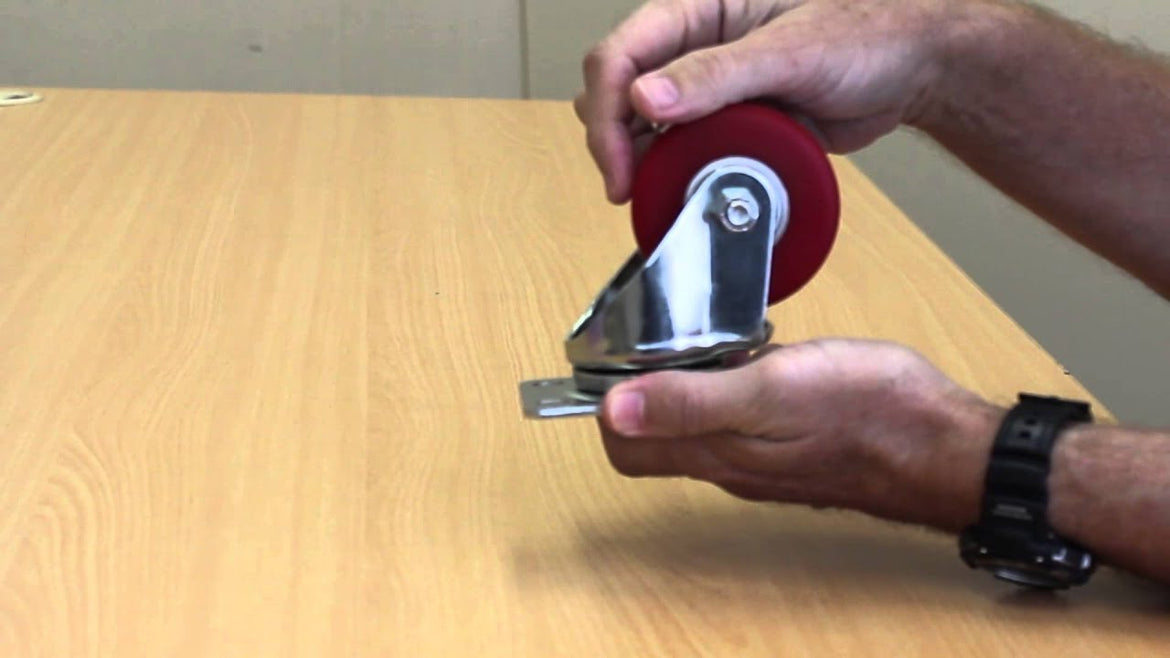
Maximizing ROI: Lifecycle Cost, Maintenance, and Replacement Strategy for Heavy Equipment Casters
Why True Caster Cost is Measured in Lifecycles
For heavy industrial equipment—whether in manufacturing, construction, or logistics—the true cost of a Heavy-Duty Caster is rarely its purchase price. The most significant costs arise from premature failure, subsequent equipment damage, and workflow disruption. This article shifts the focus from initial expense to Return on Investment (ROI). We will explore how choosing high-quality casters maximizes equipment longevity, reduces lifecycle costs, and how proactive maintenance and smart replacement strategies can protect your capital investment.
The ROI Case: Calculating True Lifecycle Cost
The financial justification for choosing premium, Industrial Casters over cheaper alternatives lies in a simple calculation that accounts for more than just the price tag.
Hidden Costs of Premature Failure
When a low-quality caster fails prematurely under heavy load, the resulting expenses far outweigh the savings:
-
Downtime Costs: Stopping production to replace a failed caster or repair damaged equipment incurs massive hourly losses in high-value industrial environments.
-
Equipment Damage: A sudden caster failure can cause heavy machinery to drop or tip, leading to expensive structural damage to the equipment itself.
-
Labor & Safety Risks: Workers must spend unbudgeted time struggling to move or repair the unit, increasing labor costs and risking Musculoskeletal Disorders (MSDs).
The Longevity Dividend
High-quality casters, built with features like precision sealed bearings and durable wheel materials (e.g., high-grade polyurethane or forged steel), reduce friction and absorb shock more effectively. This results in:
-
Extended MTBF (Mean Time Between Failures): A quality caster can last 3-5 times longer than a cheap model, drastically reducing replacement frequency.
-
Reduced Drag and Effort: Lower rolling resistance means less strain on motors (if powered) or workers (if manual), saving energy and reducing operational fatigue.
Strategic Maintenance for Maximum Caster Lifespan
Extending the life of a heavy-duty caster is the most direct way to boost its ROI. A formalized maintenance program is non-negotiable for casters carrying critical loads.
The Three Pillars of Caster Maintenance
-
Torque and Mounting Inspection: Heavy loads and vibration can loosen mounting bolts. Regularly check and re-torque mounting plates and swivel lock pins to the manufacturer's specification (e.g., quarterly or semi-annually), preventing dangerous wobbling and structural stress.
-
Lubrication Management: For non-sealed bearing casters, regular lubrication (using the manufacturer-specified grease) is essential for the swivel race and wheel bearings. Critical Note: Avoid over-lubrication, which can attract dirt and create an abrasive paste.
-
Wheel and Tread Monitoring: Regularly inspect the tread for flat spots, cracks, or embedded debris (e.g., metal shavings). A damaged wheel not only risks floor damage but also increases the required push-pull force, straining workers and decreasing efficiency.
Knowing When to Retire a Caster
Replacement should be a proactive decision, not a reactive one after failure. Replace heavy-duty casters when you observe:
-
Excessive Swivel Play: More than a few millimeters of lateral movement in the swivel indicates race failure.
-
Persistent Noise or Drag: Loud squeaking or significantly increased effort needed to push a cart, even after lubrication, signals bearing wear.
-
Worn Tread to Safety Limits: If the tread is excessively worn, the load capacity is compromised, posing a critical safety hazard.
HOLKIE: Engineered for Longevity and ROI
Choosing a manufacturer that understands lifecycle costing is paramount. HOLKIE designs heavy-duty casters specifically to maximize your return on investment.
-
Maintenance-Optimized Materials: We utilize forged steel components and high-grade, abrasion-resistant polyurethane, engineered to minimize floor damage and wear under constant use.
-
Sealed Precision Bearings: Our Heavy-Duty Casters feature fully sealed bearings that keep contaminants out and extend the lubrication interval, reducing maintenance labor hours.
-
Modular Design for Replacement: HOLKIE’s modular construction means that if a wheel tread wears out, the entire caster assembly does not need replacement. Quick, component-level swapping reduces parts costs and minimizes downtime.












